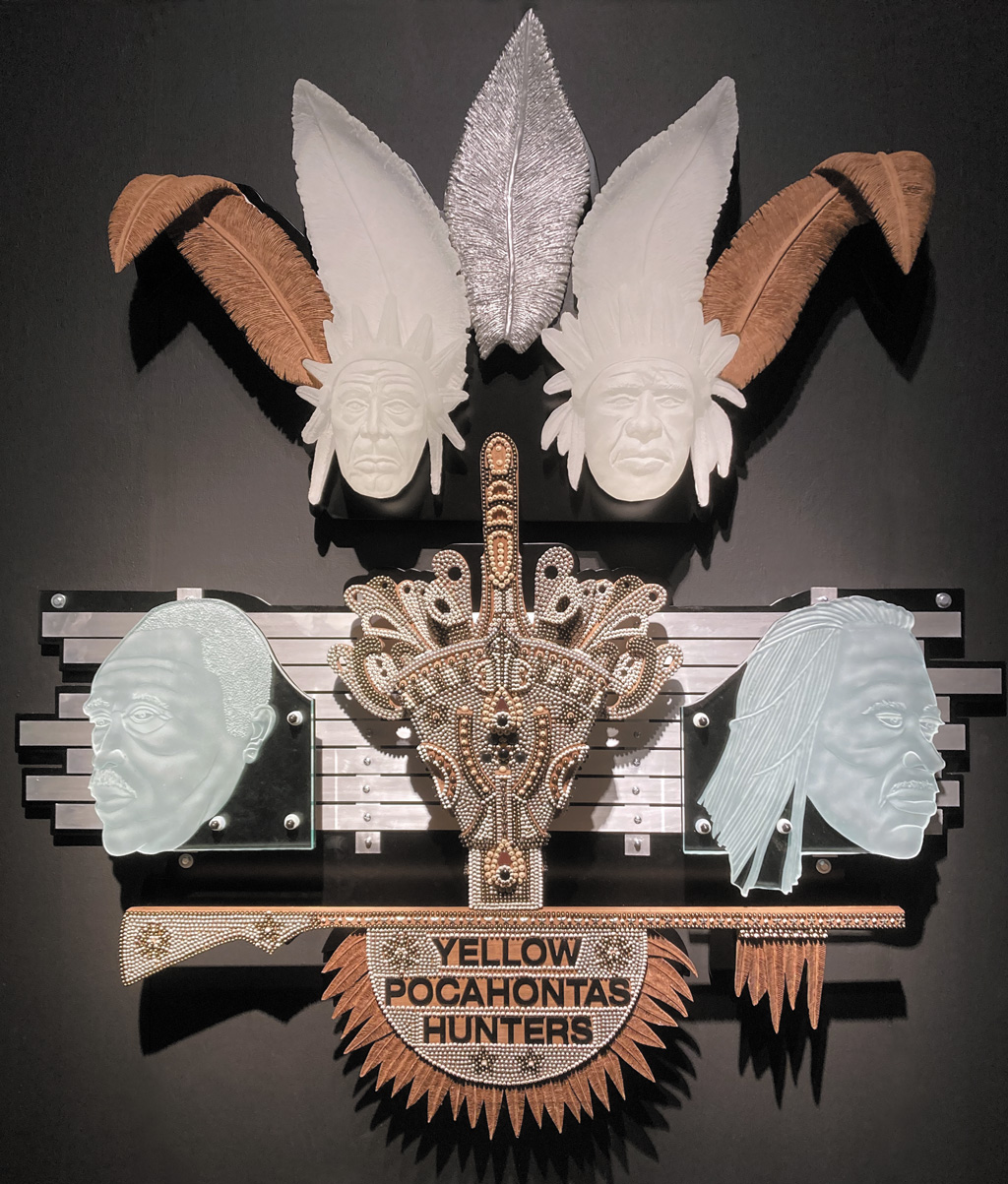Big Chief (Becate Batiste, Alfred Montana, Allison (Tootie) Montana, Daryl Montana)
Materials Kiln cast glass, cast aluminum, aluminum bar, wood, 10,000 wood and glass beads

This sculpture is a story about the black masking Indians of New Orleans. Initially excluded from traditional Mardi Gras celebrations the black community created its own tradition, beginning with Becate Batiste who founded, in the 1880’s, the first Mardi Gras Indian tribe, Creole Wild West, who are still in practice today. There is a long history of complicity between Native Americans and African Americans dating to the days of the antebellum south when the Native Americans gave shelter to run-away slaves.
Many bands were formed usually stemming from neighborhood affiliations and their encounters during parading often turned violent to settle conflicts. Alfred Montana, the nephew of Becate Batiste, was Big Chief of the Yellow Pocahontas for 20 years. After World War II his son, Allison “Tootie” Montana founded the Monogram Hunters and became its big chief in 1947. In 1956 he moved to the Yellow Pocahontas and became its Big Chief a position he held for forty years. He was the acknowledged leader of all the bands and was credited with ending the violence that occurred between them, thereby creating a more ceremonial movement and battle cry, “Tu way pocky way” loosely translated to “get the hell out of the way”, to determine who among the chiefs was the “prettiest” and best. Currently Daryl, the son of Tootie, is the Big Chief of the Yellow Pocahontas Hunters. Besides the Big Chief each tribe has a Queen, a Spy Boy, and a Flag Boy in its leadership hierarchy.
Since the 1950’s the Indian suits have evolved from a more traditional form to elaborate beaded and very colorful ostrich-plumed creations often requiring 5000 hours to complete. To enhance the competition among the tribes these suits are only used once and a completely new design is created for the following year. These suits are very heavy and weigh up to 100 pounds and consist of boots, skirt, vest, and headdress. The tribes parade traditionally on Mardi Gras and Saint Joseph’s Day, which falls on March 19.
If you have watched the television series “Treme” which tells the story of New Orleans after the devastating hurricane Katrina you will have discovered a great deal about the masking process and parading. If you have not, I highly recommend it.